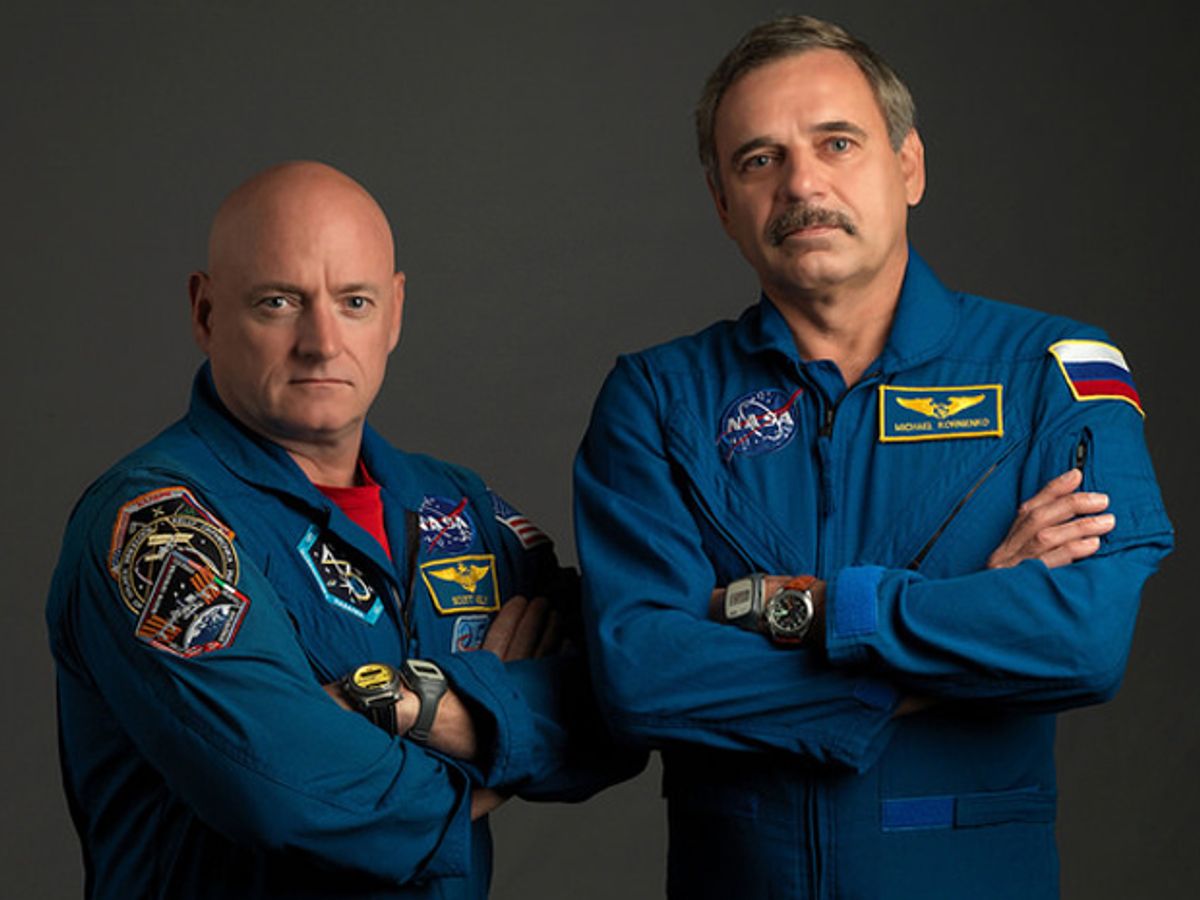If you’re planning interplanetary voyages, the main design driver is less likely to be the distance than it is to be the duration. Sure distance dictates how much propellant and what kind of engines are needed, as well as the strength of communications signals. But for how long the spacecraft must function, what you really need is reliable data about the lifetime of components.
The International Space Station, stuck in low orbit only a few hundred kilometers up, is turning out to be crucial for getting that data, which will be used on expeditions orders of magnitude farther away. After years of shaking down prototype life support systems, the station is about to host the first serious endurance test of the central component of such an expedition—the crewmembers themselves.
In late March, two regularly-rotated crewmen—one American and one Russian—will be launched with a special flight plan. They will not be replaced at the end of their standard six-month tour, but will remain in orbit for a back-to-back second six months. The relief mission that would have carried their replacements will instead carry two short-term fliers who will then almost immediately return to Earth aboard the craft that would normally have carried the relieved six-monthers.
People have flown for a full year in space before, on the Russian Mir space station. Two of them flew 365 days exactly in 1987-1988, a quarter century ago. The 3rd and 4th landed in 1995 and 1999. But the four cosmonauts who made such flights demonstrated little more than sheer physical and mental fortitude by surviving, because little useful medical data was gathered.
This time, the longterm crew will have a sophisticated battery of medical sensors as well as well-tested health maintenance equipment, such as exercise devices. More importantly, they will have a well-defined list of subtle physiological trends to be meticulously monitored, a list resulting from studies of several dozen six-month expeditions by earlier ISS crewmembers. Some of the effects, such as significant eyeball deterioration, were not even known during the previous long missions.
The men are not just to be guinea pigs under observation—they will be fully-functioning members of the normal six-person station crew. As such, along with extensive self-examination, they will perform repairs, assist ground operators with experiments, and help reconfigure the station for hosting the commercial crew transport vehicles that are due to show up the following year.
Science team members have advised me that, as is appropriate with any medical study, a sample size of two is completely inadequate to draw conclusions from. So a second two-person year-long mission is being planned for 2017, and even longer missions are under serious consideration before the station is retired sometime after 2024.
This mission has the added plum for the Russian space agency in that it opens up two short-term mission seats. One seat is going to a researcher from the European Space Agency, but the second is being sold to a private “space tourist” for upwards of US $65,000,000—a nice cash infusion bonus to be shared among components of the Russian space team.
That motivation has always been a powerful factor in Moscow space planning. One of the four cosmonauts who made a yearlong flight in the 1990s had been launched on a six-month mission and then was told halfway through that his return ticket had been sold to the country of Slovakia and he’d need to catch the next flight. I’m not making this up.
Ten years ago it almost happened again. A few months before the Russian launch of a two-person skeleton crew to the ISS, Moscow told NASA that they wanted to extend that crew’s mission to a full year. Ostensibly it was for medical research, but neither side had prepared any experiments and it soon turned out the excuse was bogus. They had promised to sell one “crew swap” ticket to another millionaire space tourist and just wanted that money.
The American on the upcoming crew, Leroy Chiao, joined with NASA space doctors to argue that the idea was nutty. (As Chiao told me, he very reluctantly agreed not to quit if he were ordered to extend.) But eventually the Russians dropped the suggestion.
Time has passed, significant data has been accumulated on six-month expeditions, and a number of worrying physiological “funnies” have been discovered. Now, with human interplanetary flight as an official—if far-term—focus, the medical value has become real. The crew was selected a year ago and are genuine volunteers. And Russia will still get the extra cash.
James Oberg is a retired "rocket scientist" in Texas, after a 20+ year career in NASA Mission Control and subsequently an on-air space consultant for ABC News and then NBC News. The author of a dozen books and hundreds of magazine articles on the past, present, and potential future of space exploration, he has reported from space launch and operations centers across the United States and Russia and North Korea.



